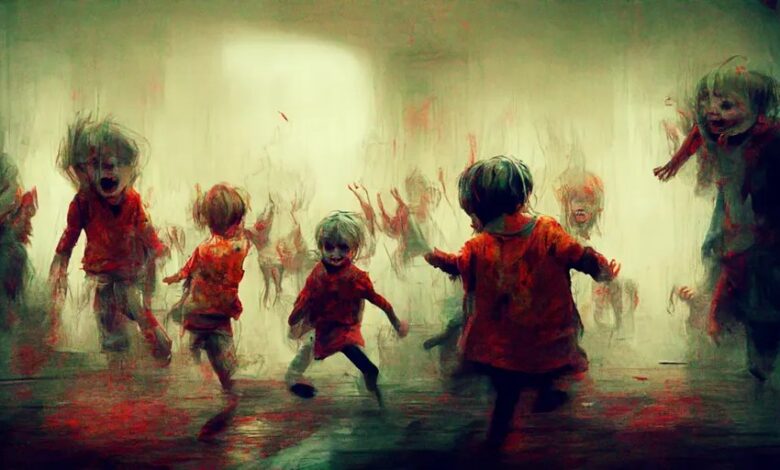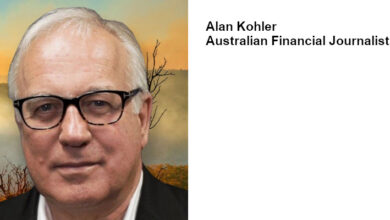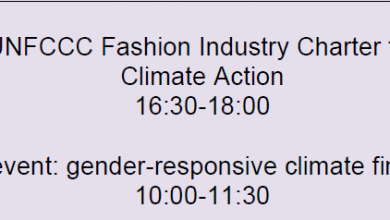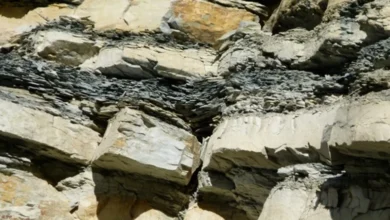Children – Watts Up With That?

From Dr. Judith Curry’s Climate Etc.
by Judith Curry
The apocalyptic rhetoric surrounding the climate “crisis” has numerous victims. Children and young adults rank among the victims of greatest concern.
Numerous academic studies have highlighted the psychological health effects of climate change on children and young adults, including elevated levels of anxiety, depression, post-traumatic stress disorder, increased incidences of suicide, substance abuse, social disruptions including increased violence, and a distressing sense of loss.
The psychological injuries to children associated with climate change are featured prominently by Our Children’s Trust which is “representing and supporting youth securing their legal rights to a safe climate.” This group sponsored the lawsuit Juliana vs. the United States, plus lawsuits in virtually all of the U.S. states and globally including Netherlands and Colombia. A key rationale for these Complaints/lawsuits is the psychological harm being inflicted on the Youth Plaintiffs. Here is one example from the Juliana complaint:
“Defendants have caused psychological and emotional harm to Kelsey as a result of her fear of a changing climate, her knowledge of the impacts that will occur in her lifetime, and her knowledge that Defendants are continuing to cause harms that threaten her life and wellbeing. As a result of the acts and omissions of Defendants, Kelsey believes that she will not be able to continue to do all of the things described in this Complaint for her life, health, and enjoyment, nor will she one day be able to share those experiences with her children.”
This is by no means the worst/alarming statement by the Youth Plaintiffs that I’ve seen, but it is the first one I spotted in a search of the Juliana Complaint.
Lise Van Susteren, a clinical psychiatrist, submitted an Expert Report on Behalf of Juliana et al. From her introduction:
“The science and literature show that a vast range of health impacts, including mental health impacts, from climate change are already impacting, and expected to impact in increasingly harmful ways, our most vulnerable population, children. Climate change is already harming children, including these youth Plaintiffs, psychologically, and this suffering increases as climate change worsens and as the federal government continues to exacerbate the dangers of climate change and does not act to stop the climate crisis. This report focuses on the current and expected psychological harms facing children as a result of climate change, and the menacing conditions that threaten future harm, if no meaningful action is taken to address climate change by the federal government. I discuss both acute and chronic climate harms because climate change has short- and long-term impacts on mental health. I discuss how these harms are worse because the federal government, including these defendants, are causing the harm and failing to properly respond to the threats posed by climate change. I also discuss why children, including some of the Plaintiffs in this case, are experiencing disproportionally harmful, and what I expect to be life-long, mental health impacts, as a result of climate change and the government’s role in causing it.”
I have personally received emails from children and young adults suffering from such effects, which were featured in previous blog posts [link] [link] . I have received numerous additional emails from teens and young adults that are very sincere and communicating with me because they are grasping for reasons not to be so depressed about this issue. These psychological injuries, at least in some individuals, seem real to me.
There is little basis in the IPCC assessments for a level of alarm that would induce such psychological effects — even in context of the IPCC’s numerous erroneous assumptions and dubious judgment calls that were outlined in my previous blog post The climate crisis isn’t what it used to be . The apocalyptic and misleading rhetoric in the media and political discourse about climate change is arguably the driving impetus of these adverse psychological health effects.
In context of a complex scientific and political debate, there are strong incentives to raising the alarm about climate change. Media gets more clicks and views with alarming stories. Activist campaigners get attention and funding. Researchers who position themselves in the mainstream of apocalyptic rhetoric receive media attention, professional recognition from increasingly activist professional societies, and greater funding opportunities. Politicians that emphasize alarming climate scenarios seek the authority to distribute significant resources to fix the problem according to their own political values.
Are the adverse psychological impacts on children and young adults merely collateral damage of this complex debate on climate change, or are children being used as political tools? It is well known that children are fostering climate change concern among their parents [link] [link], providing a motivation for apocalyptic messaging targeted at children and young adults.
Harmful rhetoric
The presentation of climate change to children is far more alarming and less nuanced than what adults are exposed to. Stories of the coming climate apocalypse have become commonplace in schools, textbooks, churches, movies and even children’s books. A prominent example is the book “Our House Is on Fire: Greta Thunberg’s Call to Save the Planet,” a picture book aimed at ages 3-8. The book’s overarching message is summed by this statement in the book: “There might not be a world to live in when she grows up. What use is school without a future?”
Media targeted at teens and young adults portrays relentless doom. The 2018 U.N. warning that governments need to take action on climate change within 12 years led Rep. Alexandria Ocasio-Cortez to incorrectly conclude that millennials fear “the world is gonna end in 12 years if we don’t address climate change.” The website of the U.K.-based group Extinction Rebellion warns that “societal collapse and mass death are seen as inevitable by scientists and other credible voices.”
The world’s teens and young adults seem to have gotten the message: A 2021 study polled 10,000 people between the ages of 16 and 25 from numerous different countries, and found that over half thought that humanity was “doomed” because of climate change [link]. Further, there is an explicitly political message being fed to teens and young adults as evidenced by this finding from the study: “Climate anxiety and distress were correlated with perceived inadequate government response and associated feelings of betrayal.”
However, there is growing alarm about alarmism among climate activists [link]. There is a fierce debate about whether more pessimistic messaging energizes people to fight climate change or causes them to conclude the world is doomed and tune out, leading us down a path of inaction.
Some voices are suggesting that we would all be better off if we dialed down the hyperbole about climate change. Kate Marvel, climate scientist at Columbia University and science communicator, states: “This message of ‘We’re all going to die, how dare you say there might be something we can do’ … that’s just not supported by the science.” “There are so many futures between doomed and fine.” “I’m not saying we can all rest, and I’m not saying we live in the best of all possible worlds. But one can have a sense of optimism by working towards a solution.”
Educational curricula
Public school districts in the U.S. are adopting curricula on climate change that portrays climate change only in context of human causes and as a peril beyond dispute, emphasizing worst case scenarios — actual climate science seems to be ignored in the curricula. Further, there is an explicit objective that students should respond through activism. The materials used in these curricula include those from UNESCO Office for Climate Education and the North American Association for Environmental Education, as well as materials provided by advocacy groups such as the Sierra Club.
- Kristen Hargis of the North American Association for Environmental Education states : “There are a lot of resources out there that are … helping students draft policies as well, and getting them involved from the beginning. And this is what we want to see, this whole-institutionapproach where we’re creating this culture of climate action.”
- The Director-General of UNESCO, Audrey Azoulay, states : “Climate change, which results from our own behaviour, is the greatest threat to our common existence. Education is an essential tool to empower young people to take action for a more sustainable future.” The website for the UNESCO Office for Climate Education states: “These resources aim at promoting action”
The “K12 Climate Action Plan” was published by the Aspen Institute. The Commission that prepared this report includes: Randi Weingarten, President of the American Federation of Teachers; Becky Pringle, President of the National Educational Association; John King, U.S. Secretary of Education (Obama Administration); Christine Todd Whitman, EPA Administrator (Bush Administration) and former NJ Governor; Linda Darling-Hammond, President of the California State Board of Education; Pedro Martinez, Superintendent of the San Antonio Independent School District. Their stated mission and beliefs :
- “MISSION: Our mission is to unlock the power of the public K-12 education sector to be a force for climate action, solutions, and environmental justice to help prepare children and youth to advance a more sustainable, resilient, and equitable society.”
- “BELIEFS: We believe today’s children and youth will be essential in the fight against climate change, and we must empower children and youth with the knowledge and skills to build a more sustainable, resilient, and equitable world.”
Additional statements of note:
- “Advocacy and the media will help build the narrative for supporting our schools in moving toward climate action, solutions, and environmental justice.”
- “In fact, education has been identified as an underutilized social tipping point needed for decarbonization — the process of phasing out reliance on carbon across all parts of the economy.”
Efforts to insert climate-related activism into all aspects of the curricula are squeezing out science, economics, political science, history, critical thinking, etc. in the curricula.
Children lacking resilience
The responsibility of adults is to teach children and young adults how to solve problems effectively, not to preach the end of the world. Adults also need to help children become more resilient.
The concept of psychological hardiness is an important one in many contexts (discussed previously at CE), but particularly with regards to children. The father of hardiness, Salvatore Maddi, defined hardiness as “the pattern of attitudes and skills that enables people to turn the stress of potential disasters into growth opportunities” (Maddi, 2014). There are three qualities of hardiness: challenge, control, and commitment. These qualities affect how one structures interactions with his or her environment and sustains the motivation necessary to persevere through life’s stressors. An individual who has the quality of challenge acknowledges that stressors are normal in life and sees them as opportunities to learn and grow by actively engaging with them. An individual who has the quality of control attempts to continue having an effect on his outcomes, even when circumstances are poor, rather than being passive or believing himself to be powerless. Finally, an individual who has the quality of commitment is predisposed to be involved with the people and organizations around him as opposed to acquiescence to alienation. Hardiness is positively related to a sense of meaningfulness and enhances performance and health. Hardiness is also negatively related to depression and anxiety.
Related to anti-hardiness of young people, the book The Coddling of the American Mind describes how parents’ attempts to promote their kids’ emotional well-being often instead makes them more emotionally fragile. The book argues that by succumbing to their own sense of fragility and wrapping themselves in the cloak of victimhood, young people are developing cognitive patterns similar to those of people suffering from anxiety and depression.
Hardiness in children is related to how children deal with stressful situations [link]. There is a well-documented increase in anxiety and depression over the past five decades. These studies suggest that risky or uncertain situations are opportunities for growth, which can provide children with rich experiences that can promote autonomy and self-efficacy. Instead of encouraging risky activities, parents and care-providers are becoming more restrictive. By encouraging children to take risks, parents and educators can help children to build characteristics of hardiness. As such, hardiness is similar to the concept of anti-fragility (discussed previously at CE).
Hardiness alters two appraisal components made by an individual: it reduces the appraisal of threat and increases one’s expectations that coping efforts will be successful. Hardiness is associated with the individual’s use of active, problem-focused coping strategies for dealing with stressful events. These two mechanisms reduce the amount of psychological stress one experiences. Teaching these skills to children can help them to tackle challenges with a positive attitude while also enabling them to independently reduce the psychological stress that is associated with these challenges.
Apart from ill-advised parenting, children and young adults are being used as tools in national and international political campaigns and are encouraged to be seen as ‘victims’. Blaming this unfortunate situation of psychological stress on a changing climate is incorrect, and the use of this situation to achieve political goals is reprehensible behavior that is acting to reinforce the childrens’ psychological injuries.
So much for “saving the planet for the grandchildren.” These depressed children often talk of not having their own children in the future because of climate change (such sentiments feature prominently in the Complaints organized by Our Childrens’ Trust). This is a pretty big backfire for the “suffer now so we can save the planet for the grandchildren” crowd.
JC note to the brainwashing educators of K-12 children: Children suffering from acute anxiety and depression are in no kind of shape to be effective activists. Further, in a decade or so, when it is apparent that there is no climate catastrophe, these young adults are not going to be very trustful of information from the establishment.
Children as climate activists
The most famous child activist in the world is Greta Thunberg (now 19 years old). I find Greta to be a remarkable individual in many ways. Her earlier activism seemed manipulated by adults; now as a young adult herself, she seems to be more of her own person. While I find her often mistaken in her conclusions and ensuing statements, I do not question her honesty or motives. There are other comparable young activists that I’ve seen reference to in Africa and Latin America (but I can’t easily find these).
Greta is often lumped in (inappropriately) with the teen/young adult thugs that (under the sponsorship of Extinction Rebellion , Just Stop Oil and others) are gluing themselves to roads to stop traffic, throwing tomato soup at paintings in museums, etc. Well maybe this is a step up from selling drugs, but maybe not. Last week in Germany, a bicyclist died because climate activists were blocking the roadway for emergency vehicles, preventing them from reaching the accident scene [link].
At first blush one might classify these young protestors as morons, but I suspect they are actually being paid very well for their transgressions (perhaps even reflecting hardiness by seizing an economic opportunity). The Climate Emergency Fund (CEF) seems to be coordinating funding for these organizations. Aileen Getty, heiress to the Getty oil fortune, and the Getty Foundation have apparently provided more than $4M in funding to the Climate Emergency fund. . Rory Kennedy (daughter of Robert F. Kennedy) is on the board of the CEF. Senior figures at CEF also include members of the film-making and publishing elite [link]. Extinction Rebellion is also bankrolled by the Gettys, Kennedys and other billionaire families. The Equation Campaign was launched in 2020 with a $30M pledge from two members of the Rockefeller family, heirs to the Rockefeller oil fortune [link].
And people criticize Elon Musk for wasting his fortune on things like Twitter . . .
The bottom line is that these protests are not grassroots activism, but are funded by millionaires, quasi-charities and shadowy foundations. What is needed is a counter organization analogous to Our Children’s Trust that provides litigation support for people and institutions that are harmed by the actions of these activist organizations. Sue organizations such as CEF, the individuals on their Board of Directors, and individuals and foundations providing substantial support to these organizations. I’m no lawyer, but the family of the bicyclist that was killed in Germany seems to me to have a much stronger case for a lawsuit than the lawsuits sponsored by Our Childrens’ Trust based upon childrens’ psychological injuries.
Conclusion
It is difficult to avoid concluding that children are being used as tools in adults’ political agenda surrounding climate change. This tooldom is having adverse impacts on the mental health of children and young adults.
I find the K-12 educational brainwashing by establishment educators to be particularly reprehensible. Wouldn’t it be much better for the children to learn about geology and meteorology, mass media influences on politics and society, and critical thinking about big societal issues? Wouldn’t it be great to motivate students to want to contribute to solving society’s problems and give them the academic tools to take advantage of opportunities?
But a more fundamental issue is how children are being raised, so that they are lacking in resilience and hardiness.
And finally, there are near- and long-term political implications. Does anyone think that throwing tomato soup at paintings in museums is helping the “cause”? In the longer term, all of this propaganda and brainwashing will backfire when it becomes apparent in a decade or two that there is no climate catastrophe, and young adults are rebelling against the ‘establishment’.




